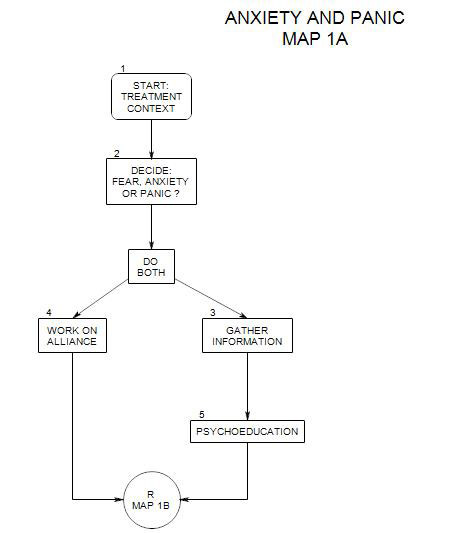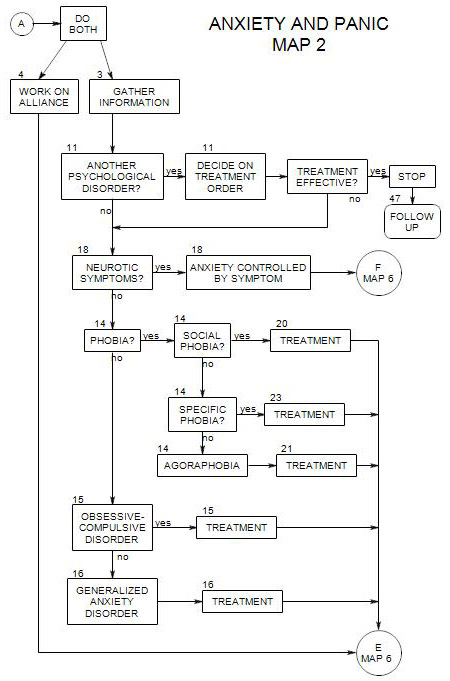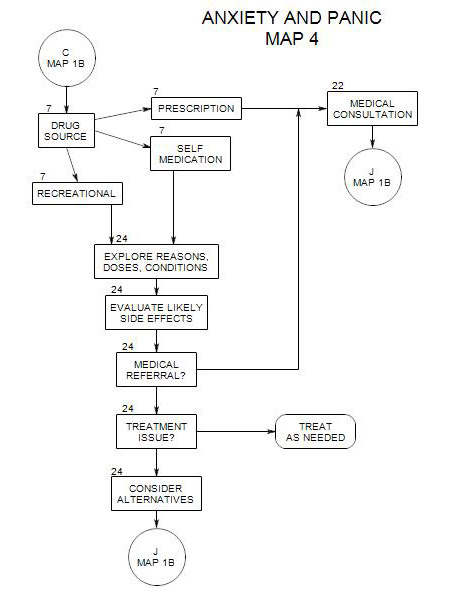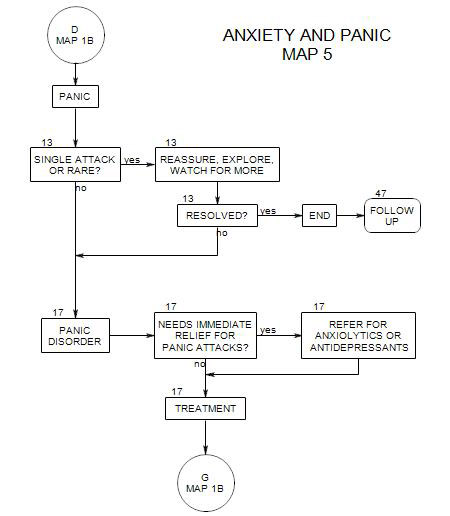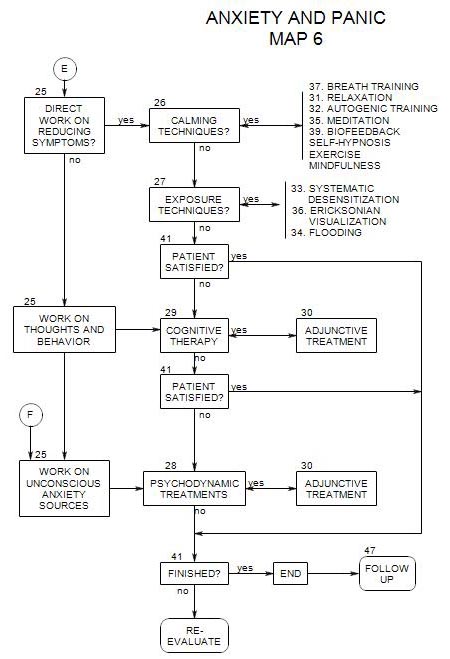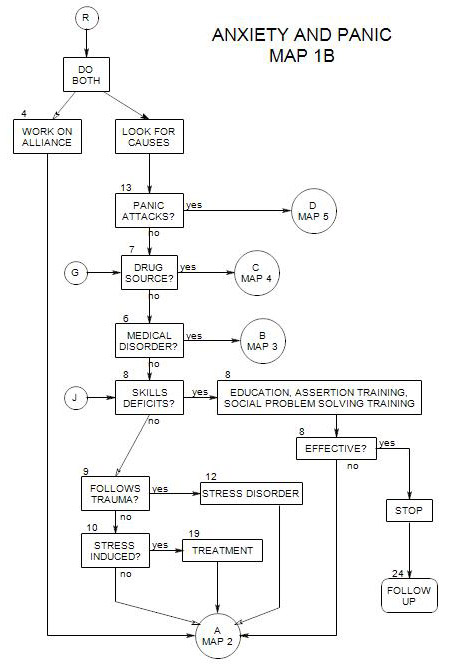
SECTIONS: 4 | 6 | 7 | 8 | 9 | 10 | 12 | 13 | 19 | 24
- Follows Section 10 on Map 1B
Many life changes can be anxiety inducing without being traumatic, and the person may need psychotherapy in order to cope with them and move on.
It is widely recognized that stresses can compound in a person’s life experience to become debilitating in various ways, which may include chronic anxiety or other symptoms. What is not always clear is the extent to which the person’s issues are externally caused or internally generated. It is common to look at both internal and external sources of stress when deciding on treatment. It is also often unclear about what form of treatment will be most helpful.
19a. Treating the anxiety
Whatever the source of the person’s experience of stress, the patient’s reaction may need to be managed first. There are several possible treatments for the internal experience of stress and anxiety, including-
- Calming techniques (Section 26)
- Psychoeducation [Section 38], to help normalize the experience and provide information about the person’s reactions.
- Medication if the person’s reaction is acute and he/she needs immediate relief. For more on this, see Section 38. As always, the risk of medicating too quickly is that it may interfere with the patient’s motivation to make real changes.
19b. Dealing with the sources
Treatment can take many forms. Primary to all treatments is identifying the sources of anxiety and putting them in perspective.
For chronic environmentally induced stress reaction, the treatment would involve-
- problem solving.
- change of environment [job, relationships, etc.].
- psychotherapy to explore the person’s choice to remain in the stressful situation, reactions to stress, alternative interpretations that make the situation less stressful, etc.
19c. Formal Diagnosis
Typically, when working with a patient who is experiencing anxiety from life stresses, formal diagnoses in the “adjustment reaction” range are not used. Such formal diagnoses tell insurers that the stresses are within the normal range and the patient’s reactions are normal and self-limiting. Therefore, insurers commonly refuse to support treatment. If treatment is to be justified to third party payers, it must be on other grounds.
Reference: Gunderson: Life Stress and Illness includes a table that assigns stress values to a wide range of life events. It then cites research showing that the higher a person’s total score over a recent time period, the greater the likelihood the person will get sick.
